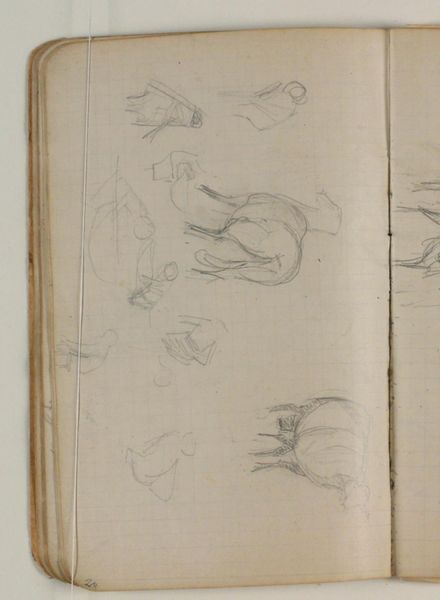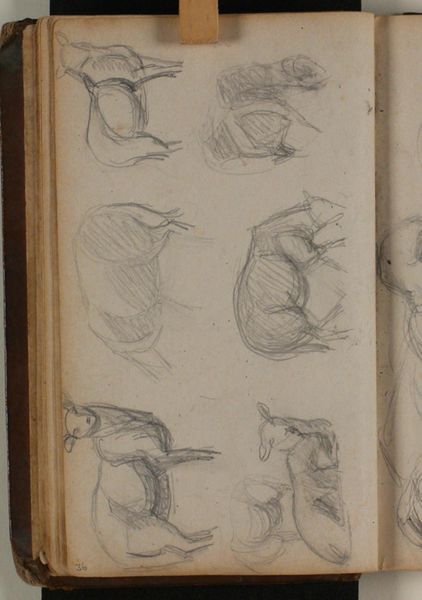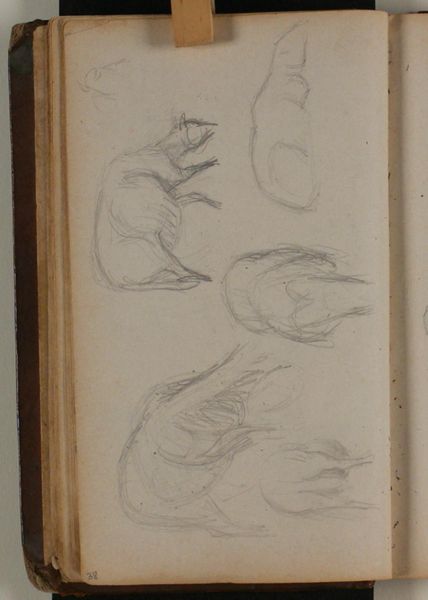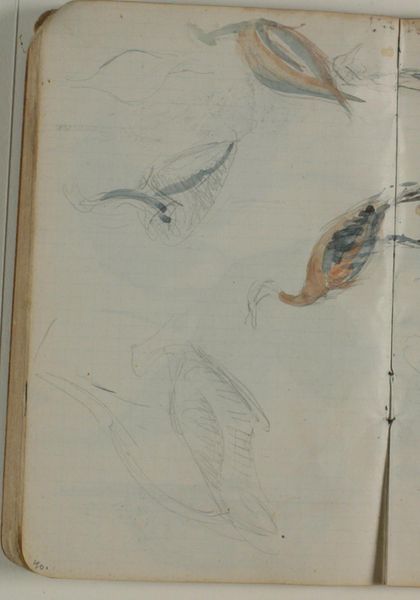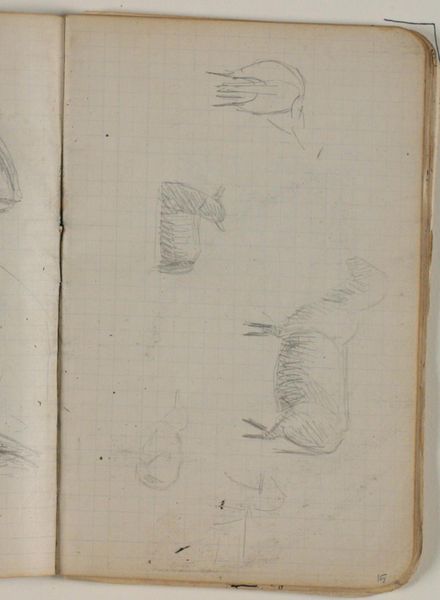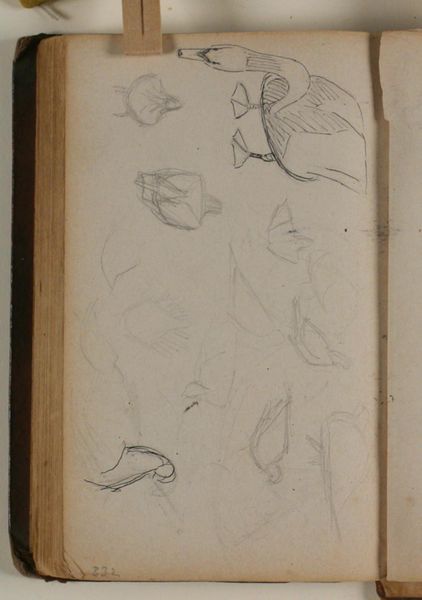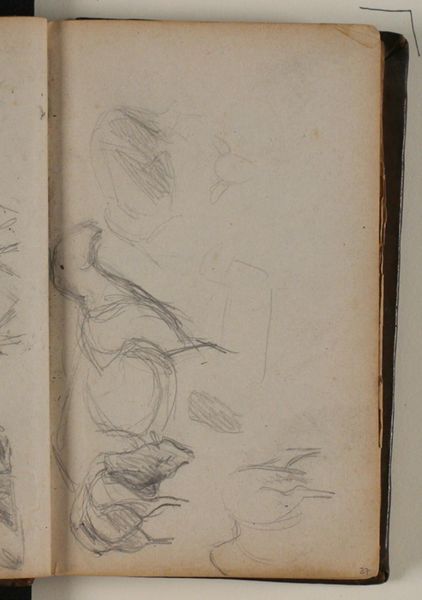
Dimensions: 175 mm (height) x 110 mm (width) (bladmaal)
Curator: This is "Skitse af traner," or "Sketch of Cranes," by Niels Larsen Stevns, likely created between 1900 and 1905. It’s currently held here at the SMK, drawn with pencil on paper. Editor: Immediately, the delicate nature of the medium speaks to me. These quick studies evoke such quiet observation—they capture movement and stillness so fleetingly. Curator: The work shows us Stevns' dedication to draftsmanship and understanding form. The repetition and variation of the sketches really emphasize the labor behind his skill. Consider the availability of drawing materials at the turn of the century. Pencil and paper, being relatively inexpensive, facilitated widespread artistic exploration. Editor: That exploration also allows for a glimpse into a specific moment in environmental history. Cranes are migratory birds; their presence or absence signals changes in climate, agriculture, even human settlement. Did the expansion of Copenhagen impact Stevns' encounters with these birds, thus influencing their proliferation within his sketchbooks? Curator: Good point! It's plausible. And remember that the act of sketching itself, using accessible materials, democratized art production, moving away from commissioned portraits toward landscapes and studies of nature accessible to everyday observation. Editor: And that democratization intersects with growing conservation awareness in the early 20th century. These sketches might reflect a desire to preserve, to document, a species vulnerable to human intervention and rapid industrialization. Were cranes viewed differently then than, say, domesticated birds in terms of how people accessed resources? Curator: Perhaps. What’s interesting to me is less their symbolic value and more how Stevns repeats motifs to understand construction. Look at the lower sketch: the layering of pencil creates tonal value, a manipulation of material, for the benefit of depicting a bird’s texture and volume. Editor: Which leads me to consider whether the labor reflected in those layered pencil strokes becomes a visual echo of the cranes' own strenuous journeys. Migration is labour, physically taxing work. This art and their effort share ground. Curator: Absolutely. I think analyzing the process illuminates a connection not always immediately obvious when thinking about representation versus the pure, raw effort of the hand. Editor: I agree. And the quiet attentiveness evidenced through process connects art to broader concerns of how we, and Stevns himself, observe and record changes unfolding in the natural and social worlds.
Comments
No comments
Be the first to comment and join the conversation on the ultimate creative platform.

